Sorting and stacking of dry timber and fresh wood in a single plant. Mostovdrev in Belarus has invested around EUR 2.5 million in an automated Kallfass sorting system.
Mostovdrev is a joint stock company and one of the largest wood processing enterprises in the Republic of Belarus. In addition to being sold in Belarus, its furniture, construction and finishing products are also exported to the CIS countries, Europe and the Middle East. Mostovdrev is firmly committed to strict quality control and use of the latest production technology. For this reason, the company decided to expand its sawmill through the addition of a new combination timber sorting system with connected stacking plant from Kallfass. Installation was completed last year, followed by commissioning of the plant. Mostovdrev’s declared production target is to process 100,000 m³ per annum.
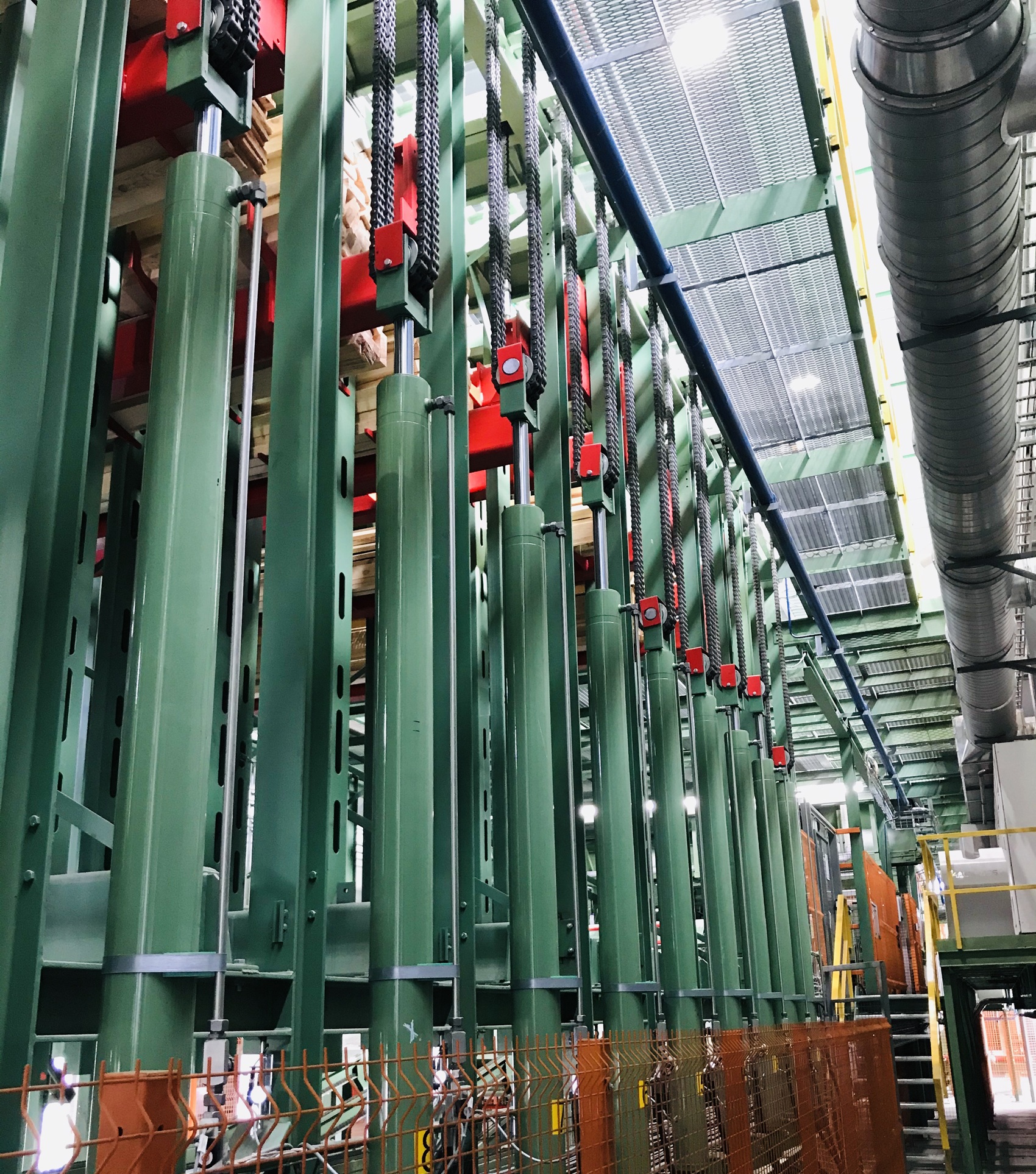
Kallfass timber sorting system with 20 vertical boxes and a box for non-assignable pieces
Transparent processes in the sorting system
Both dry timber and fresh wood from spruce and pine are processed at the Mosty location in two shifts. The main product and side boards are received from the EWD saw line and fed to different buffer conveyors for unscrambling. Alternatively, the dried or damp product can also be fed to the unscrambler via a tilt destacking system. A package chain conveyor upstream of the tilt destacking system buffers up to 3 packages (with sizes of 1.5 x 1.5 and 1.2 x 1.2 m). The separated timber is backed up and cycled onto an assessment chain conveyor for manual quality control. Each board is individually accommodated and rotated for inspection on both sides before being deposited again on the conveyor. A worker examines the product and can realise chop cuts by pulling waney timbers a little from the conveyor. Product dimensions are subsequently checked and classified before forwarding to the sorting system. Mostovdrev has chosen a compact sorting system with 20 vertical boxes and a box for non-assignable pieces that can be filled with timber lengths of 2,000 to 6,200 mm at a rate of 60 cycles/min. Sorting programs and Kallfass visualisation software facilitate management and enhance the transparency of processes in the sorting system. Fault messages and board data can be archived and recorded.
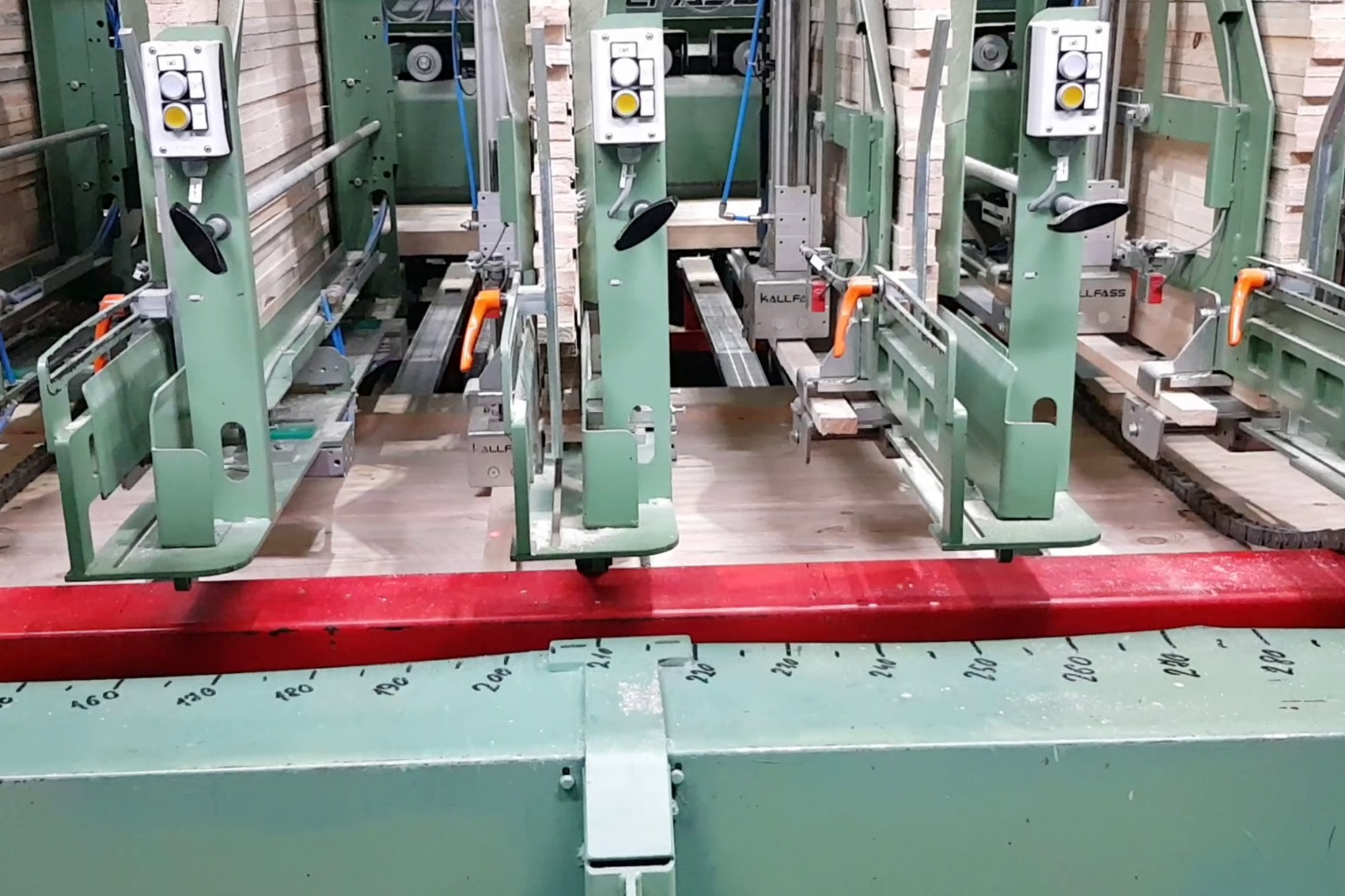
Stick magazines for automated placement of dry sticks on stacking layers
Stacking with automated stick placement
In order to stack the sorted timber, the first 5 sorting system boxes are first emptied contrary to the conveying direction onto a conveyor and, only then, conveyed further in the conveying direction to avoid tilting of timbers. The batch then needs to be unscrambled before layers can be created with widths between 1,200 mm for shipping packages and 1,500 mm for drying packages. The downstream Kallfass multiple cross-cut saw is equipped with 4 freely adjustable saw units and cuts the trimmed product precisely in layers to desired lengths (shortest crosscut length 1,200 mm). Stored cutting programs facilitate quick batch changes where necessary.
Individual layers can be stacked in the stacker in single or multiple layers of packages with a maximum width of 1,500 mm. Placement forks then pick up the individual cut layers and place them on the package to be formed. Placement of drying sticks between each layer is automated and realised at a defined distance with 12 stick magazines. Dispatch sticks are laid manually. Finally, the completed packages with a maximum length of 6,000 mm are marked with a label and strapped to increase stability.
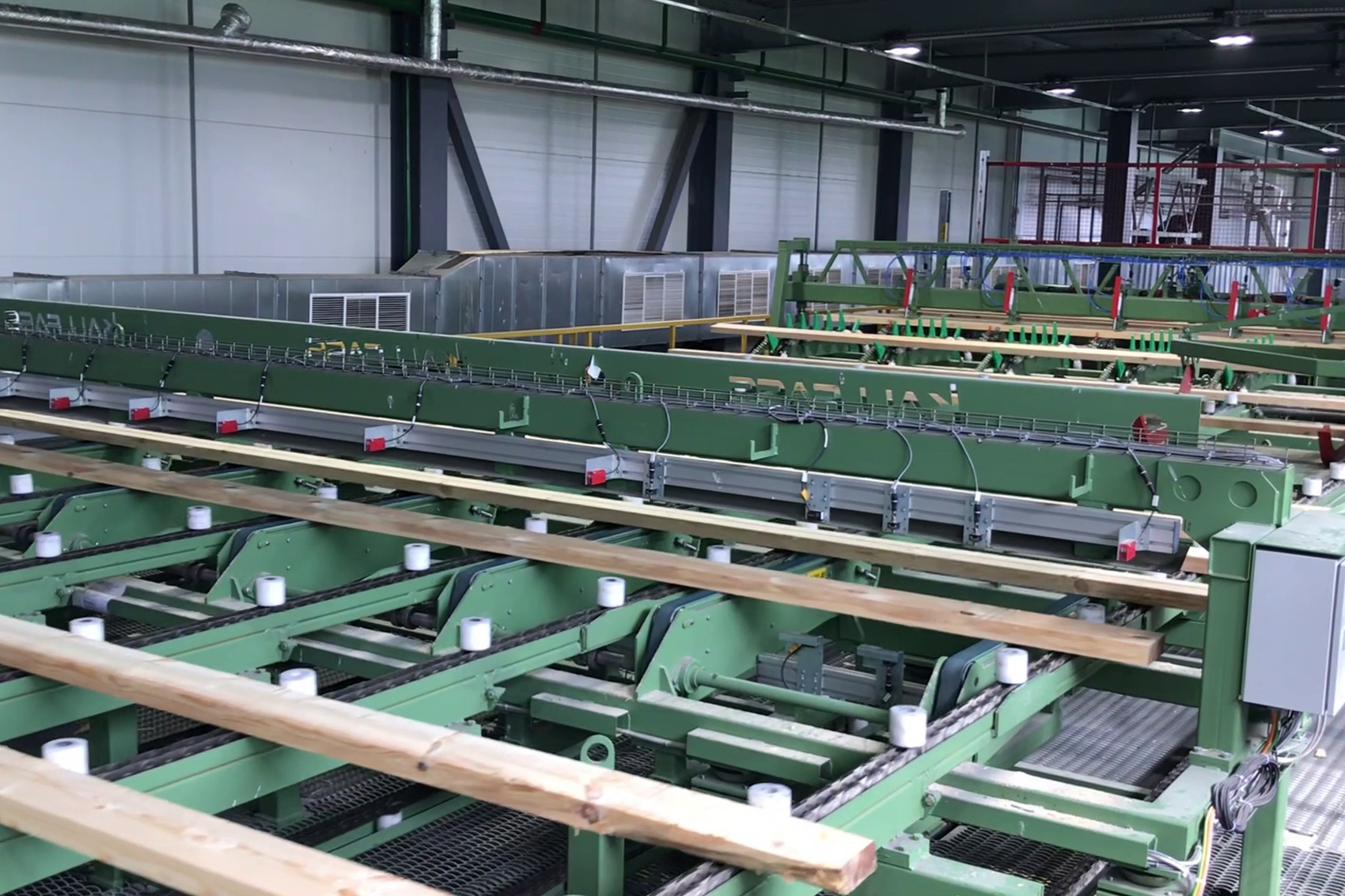
Classification of timber prior to sorting through quality assessment with an assessment chain conveyor (rear) and dimension measurement system (front)
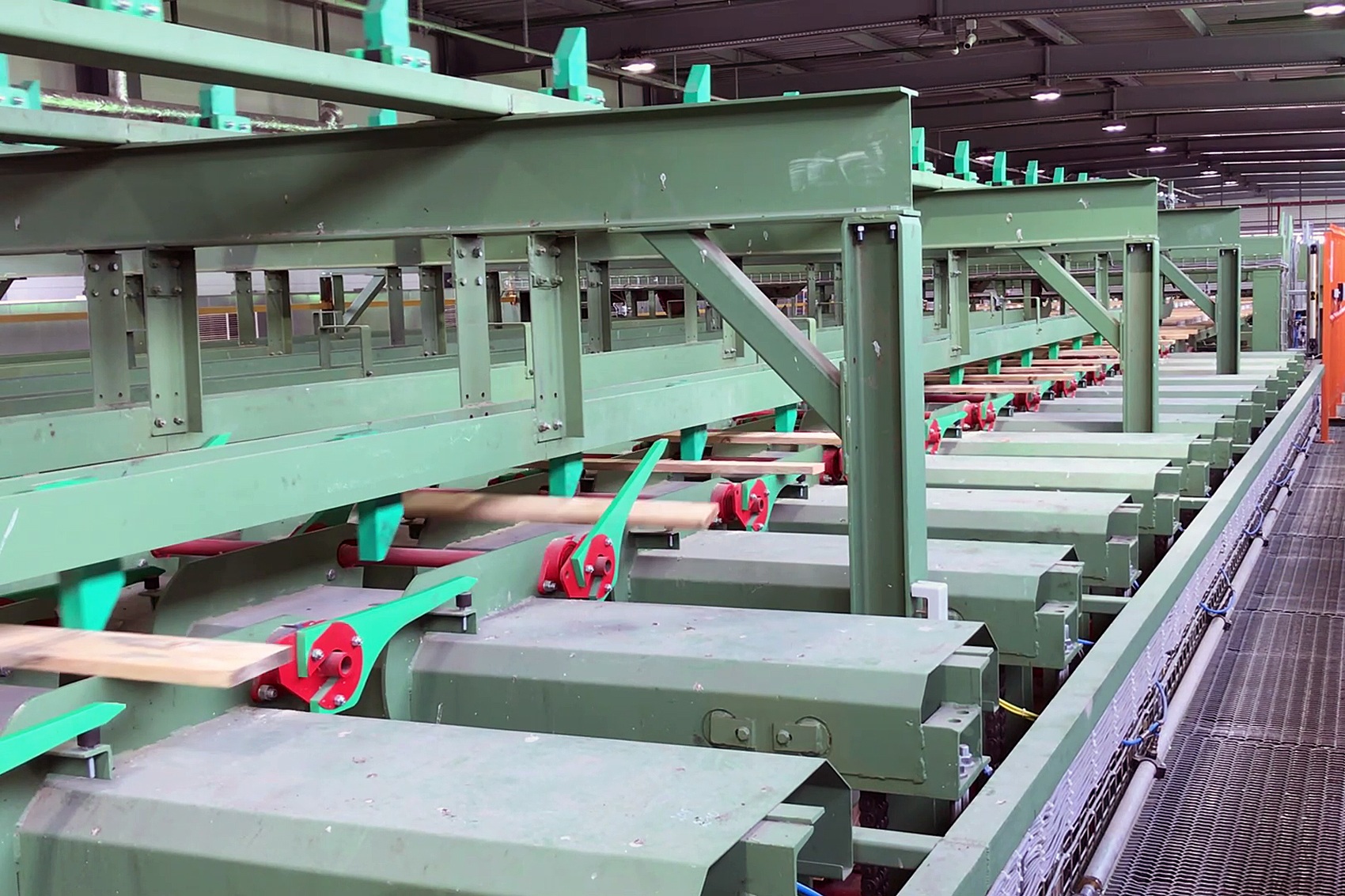
Charging of vertical box sorting system at 60 cycles/min.
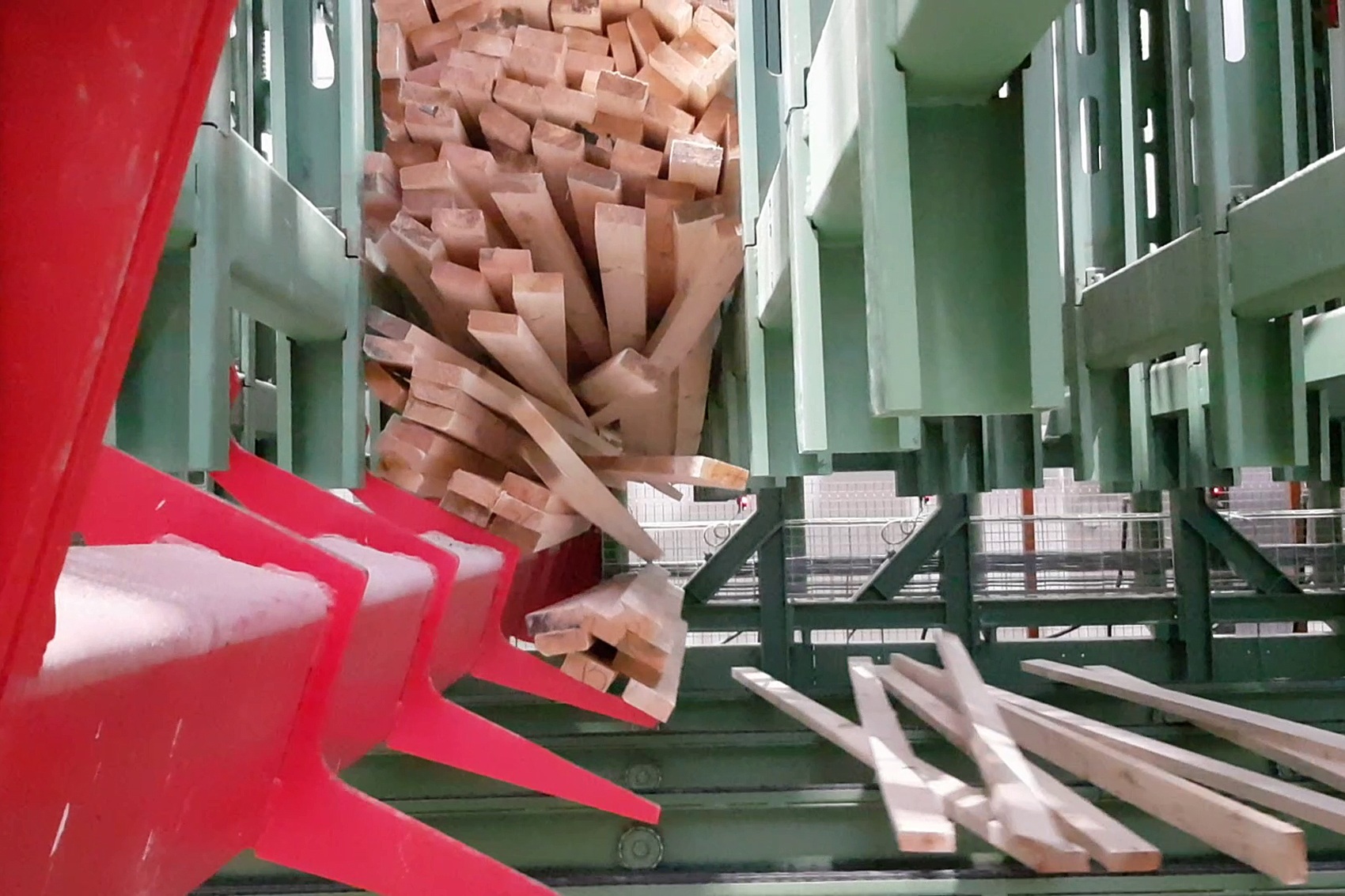
Emptying of boxes onto a discharge conveyor, with the first 5 boxes contrary to the conveying direction to avoid tilting
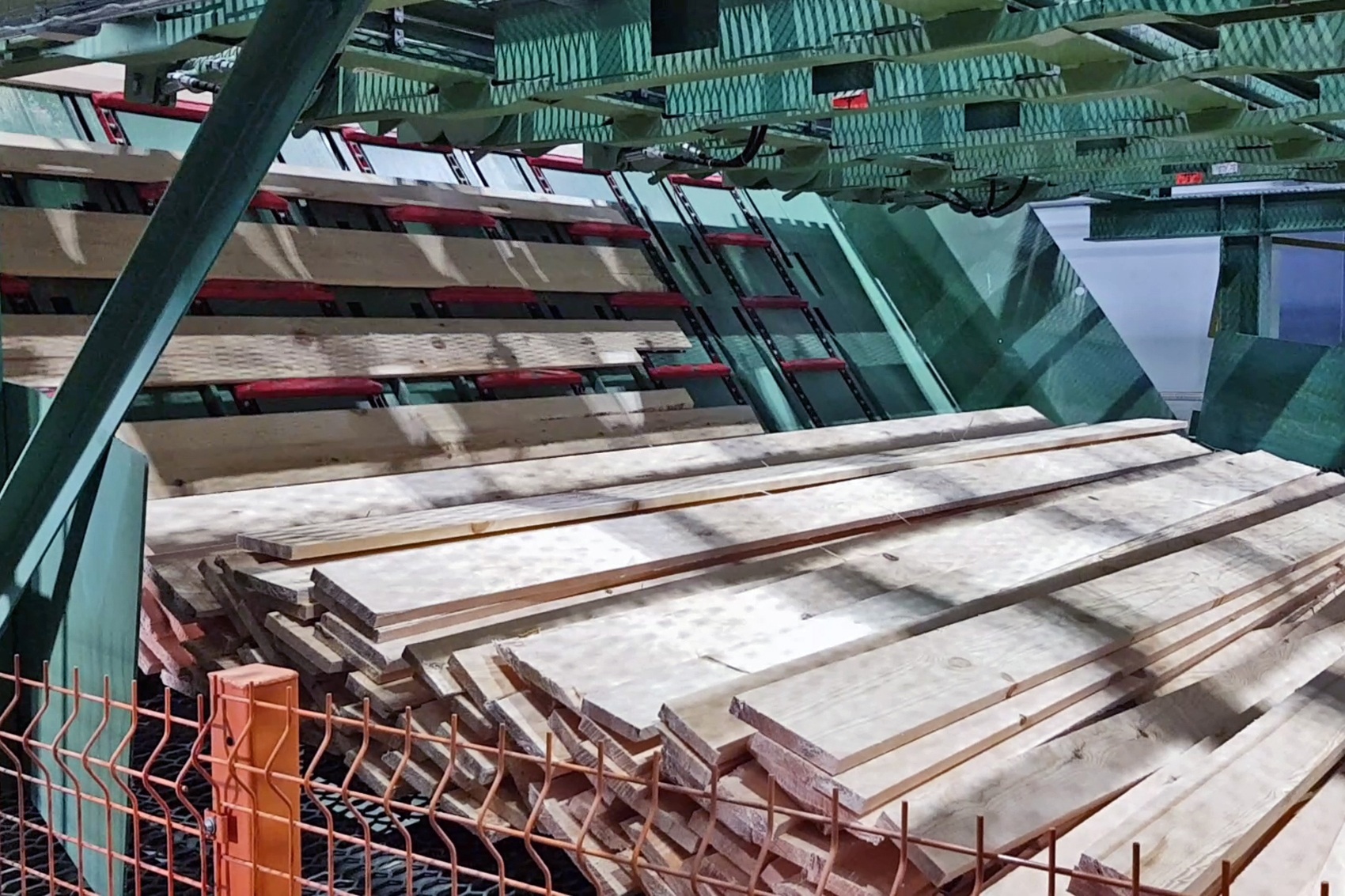
Unscrambling of batches following emptying for subsequent formation of layers
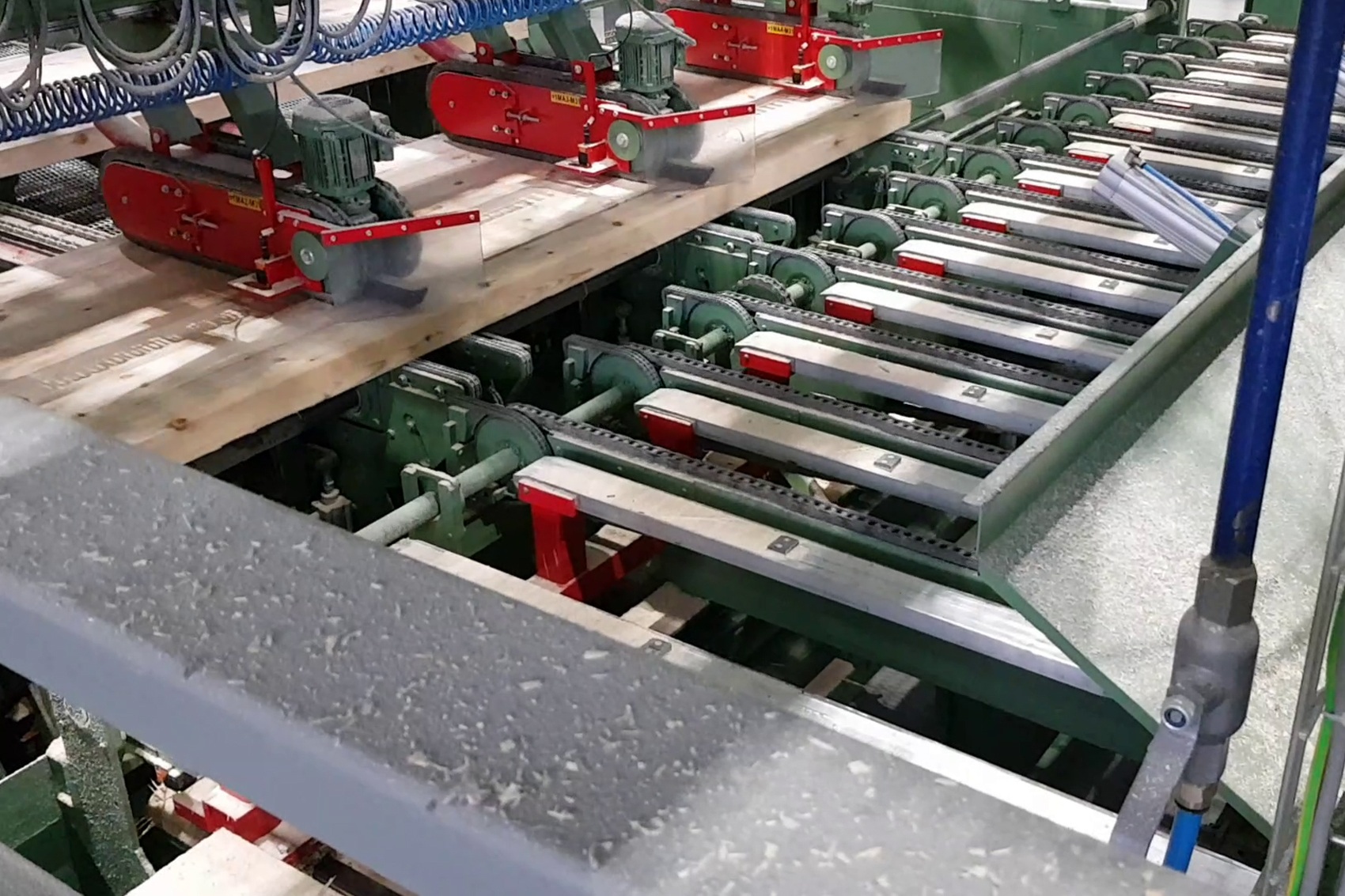
The Kallfass multiple cross-cut saw cuts timber in layers to desired lengths
